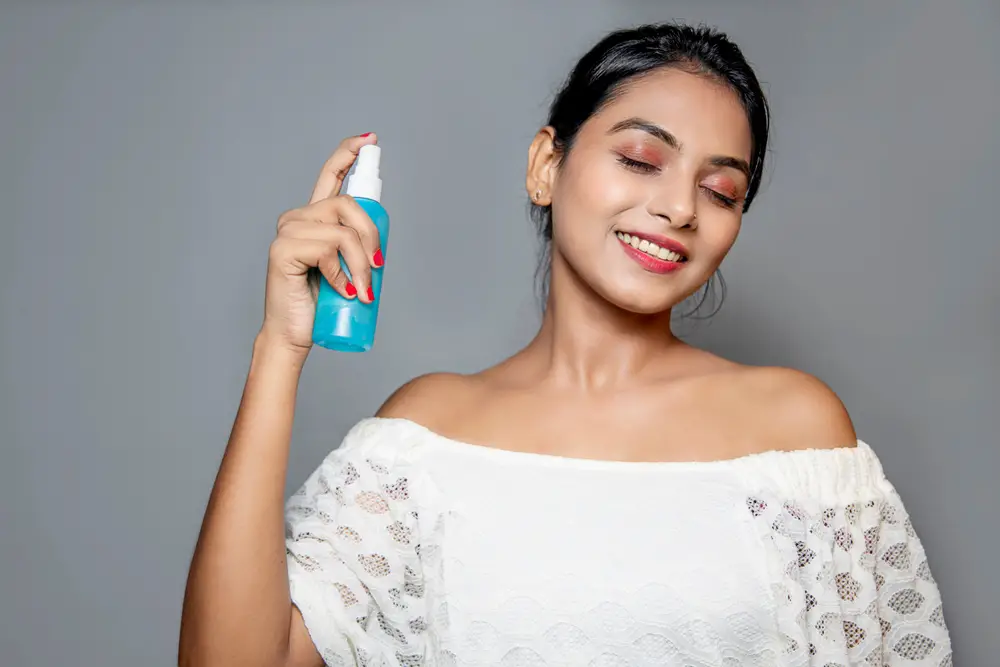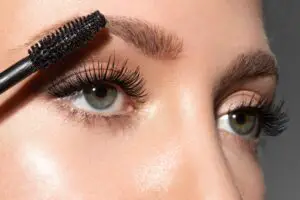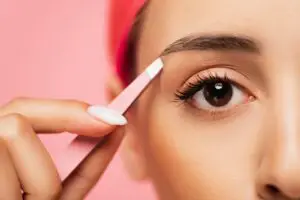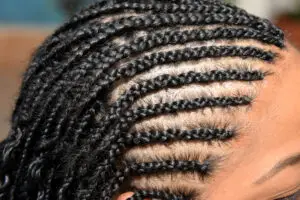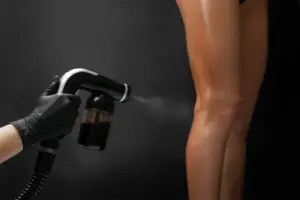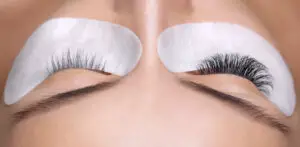Setting sprays have become a staple product in many makeup routines, offering an elegant finishing touch to help lock in makeup and extend its wear. But, as is often the case with cosmetic products, some users might prefer alternative solutions or have run out of their trusty setting spray.
Thankfully, there are effective substitutes available that can help achieve a similar result.
One common alternative often found in households is hairspray. Hairspray has a long history of being used as a setting spray, as its key function is to hold hairstyles in place.
While it’s not specifically designed for use on the face, many swear by its makeup-setting abilities. Another popular and natural choice is rose water, which not only helps set makeup but also provides a refreshing, hydrating effect.
Rose water is suitable for all skin types, including sensitive skin, and its soothing properties make it a versatile option.
If you’re interested in more DIY or budget-friendly options, you might consider creating your own setting spray using ingredients such as aloe vera gel, glycerin or witch hazel.
By mixing and matching ingredients based on your skin type and needs, you can tailor-make a substitute that is just as effective as store-bought setting sprays.
Purpose of Setting Spray
Setting spray is a cosmetic product designed to help makeup stay in place for longer periods. It creates a protective layer over the makeup, preventing it from smudging, fading, or wearing off due to factors like sweat, humidity, or natural skin oils.
One primary function of setting sprays is to provide a long-lasting and durable hold. Many people use it for special occasions, such as weddings or parties, when they need their makeup to stay fresh for hours.
Moreover, using setting sprays can also enhance the overall appearance of the makeup, giving it a smoother and more polished look.
Additionally, setting sprays are versatile and can be used with different types of makeup products such as foundation, eyeliner, mascara, and eyeshadow.
They may also offer additional benefits, such as hydration, oil control, or a specific finish (matte, dewy, or radiant). This flexibility allows the user to find a setting spray compatible with their skin type and desired look.
Types of Setting Spray Substitutes
Powder Alternatives
A popular alternative to setting spray is using powder products. These can help to achieve a similar long-lasting and oil-free makeup look. There are several types of powders suitable for different skin types and concerns:
- Translucent powders can suit most skin types and provide a matte finish without altering your makeup’s colour.
- Pressed powders offer a convenient on-the-go application, typically providing more coverage and shine reduction.
- Finishing powders are designed for a final touch and provide a soft-focus effect to blur fine lines and imperfections.
Some options include:
- Laura Mercier Translucent Loose Setting Powder
- Rimmel London Stay Matte Pressed Powder
- Makeup Revolution Luxury Banana Powder
Facial Mists
Another alternative to traditional setting sprays are facial mists. These lightweight, hydrating mists can help to refresh and set makeup while also providing skincare benefits. Some popular facial mists include:
- Caudalie Beauty Elixir
- PIXI Glow Mist
- Fresh Vitamin Nectar Antioxidant Face Mist
To use a facial mist as a setting spray substitute, ensure you mist your face from a distance, allowing the product to evenly distribute over your makeup. Wait for the mist to dry before touching your face to prevent smudging.
DIY Solutions
Creating your own DIY setting spray substitute can be cost-effective and allows you to tailor the ingredients to suit your skin’s needs. Some common DIY solutions include:
- Glycerine and water:
- 1 part glycerine
- 3 parts distilled water
- Aloe vera and witch hazel:
- 2 tbsp aloe vera gel
- 2 tbsp witch hazel
- 2 tbsp distilled water
- Rosewater and glycerine:
- 1 tbsp glycerine
- 4 tbsp rosewater
To make your DIY setting spray, combine your chosen ingredients in a small spray bottle and shake well. Apply as you would a store-bought setting spray, misting your face evenly from a distance after makeup application.
Choosing the Right Substitute
When looking for a suitable setting spray substitute, it is essential to consider various factors such as your skin type and budget. This will help you make the best decision according to your needs.
Skin Type
Knowing your skin type is crucial in choosing the right substitute for a setting spray. Some options might work well for one skin type but not for others. Here are the common skin types and some recommendations:
- Dry skin: Search for products containing hydrating ingredients such as glycerin and aloe vera. A hydrating facial mist can help lock in moisture and keep your makeup in place.
- Oily skin: Opt for a substitute that helps control oil production, like a mattifying primer or a translucent setting powder.
- Combination skin: You can either use a combination of products targeting specific areas of your face (e.g., mattifying primer on the T-zone and hydrating mist on the cheeks) or choose products suitable for all skin types.
- Sensitive skin: Look for substitutes with gentle, fragrance-free formulas. Micellar water or a gentle toner can be good alternatives for setting makeup on sensitive skin.
Budget
It is also essential to find a substitute that aligns with your budget. There are options available at different price points:
| Price Range | Example Products |
|---|---|
| Low | DIY setting spray, drugstore setting powders, and facial mists |
| Mid | Mid-range setting powders and facial mists |
| High | Luxury primers, setting powders, and facial mists |
Keep in mind that you do not need to spend a fortune to find an effective setting spray substitute. With a bit of research, you can find affordable options that deliver excellent results.
Application Tips for Substitute Products
When using substitute products for setting spray, there are a few application tips to consider in order to achieve the best results.
Use a Light Hand
Always apply lighter amounts when using a substitute. Too much product can make makeup appear cakey or smudge easily. Patience is key – build the layers gradually to reach the desired effect.
Know Your Skin Type
Choose a product that caters to your skin type. For oily skin, opt for mattifying or oil-controlling substitutes. For dry skin, aim for hydrating or moisturising products.
Optimal Temperature
When spraying water-based substitutes, refrigerate them beforehand. Using cold products helps to set makeup more effectively and provides a refreshing sensation.
Application Techniques
Different substitutes might require various application methods. Here are some techniques for popular alternatives:
- Loose Powder: Use a fluffy brush to dust powder over the face. Pay attention to oil-prone areas like the T-zone.
- Pressed Powder: Pat the powder gently onto your face with a makeup sponge or puff. Roll it onto the skin instead of dragging it to prevent smudging.
- Aloe Vera Gel: Apply the gel with clean fingers or a flat foundation brush in a thin, even layer. Allow it to dry before proceeding with the makeup routine.
Proper Sequence
Apply the substitute immediately after completing your makeup. If using powders, apply before mascara or false eyelashes to prevent smudging.
Mind the Distance
When spraying liquid substitutes, maintain a distance of 20-30 centimetres from your face. Close your eyes to avoid irritation.
With these application tips in mind, you’ll be able to achieve great results using setting spray substitutes.
Possible Drawbacks of Substitutes
While there are various substitutes available for setting spray, there can be some drawbacks to using them. It is important to be aware of these potential issues when considering alternatives.
One of the main concerns is that the substitutes might not offer the same level of makeup longevity as a dedicated setting spray.
Some alternatives, like hair spray or facial mists, might provide a temporary fix, but they may not be able to maintain the makeup’s appearance for an entire day.
Moreover, these alternatives could potentially lead to skin irritation or breakouts due to their formulation. For example, using hair spray on the face might cause pore-clogging as it contains chemicals specifically designed for hair and not intended for direct contact with the skin.
Similarly, some facial mists and toners might contain alcohol, which can dry out the skin and cause irritation.
Another drawback is that the substitutes might not provide an even application compared to a dedicated setting spray. This could result in patchy or uneven makeup, which might look less polished than desired.
Additionally, using a substitute product that is not specifically designed for makeup setting could lead to an alteration in the makeup’s finish, such as making it more matte or dewy.
Lastly, while some of these substitutes might be more affordable or readily available than setting sprays, it is crucial to remember that they are not specifically designed for this purpose. As a result, there may be a compromise in quality, effectiveness, and overall performance.
It is always essential to weigh the potential drawbacks of using a substitute against the benefits to make an informed decision about whether an alternative product is suitable for your needs.
Conclusion
In summary, there are several effective substitutes for setting spray that can be used to achieve a long-lasting makeup look. Some of these alternatives include:
- Facial mists: These lightweight sprays can be used to hydrate the skin and help to set makeup in place. Examples include rose water and cucumber mist.
- Makeup primers: Applied before makeup, primers create a smooth base and can help to extend the wear of your makeup. Silicone-based and water-based primers are popular choices.
- Translucent powders: Lightly dusting a translucent powder over your completed makeup can help to set it in place and reduce shine. Look for finely milled powders for best results.
- DIY setting sprays: Creating a homemade setting spray using a mixture of water, glycerine, and a few drops of essential oil can be a cost-effective alternative to commercial setting sprays.
It is important to consider your skin type and makeup preferences when selecting an alternative to setting spray. For individuals with oily skin, using a primer or translucent powder may be more effective in controlling shine, while those with dry skin might prefer a hydrating facial mist.
Ultimately, experimenting with different alternatives will help you find the most suitable option for your personal makeup routine.
By incorporating one or more of these substitutes into your makeup kit, you can achieve a flawless and long-lasting finish without relying solely on setting spray.

I’m Jennifer a beauty and wellness expert. I believe in promoting a sustainable and healthy lifestyle from within. Helping people feel good is my passion; whether it’s teaching yoga or offering skincare advice.

